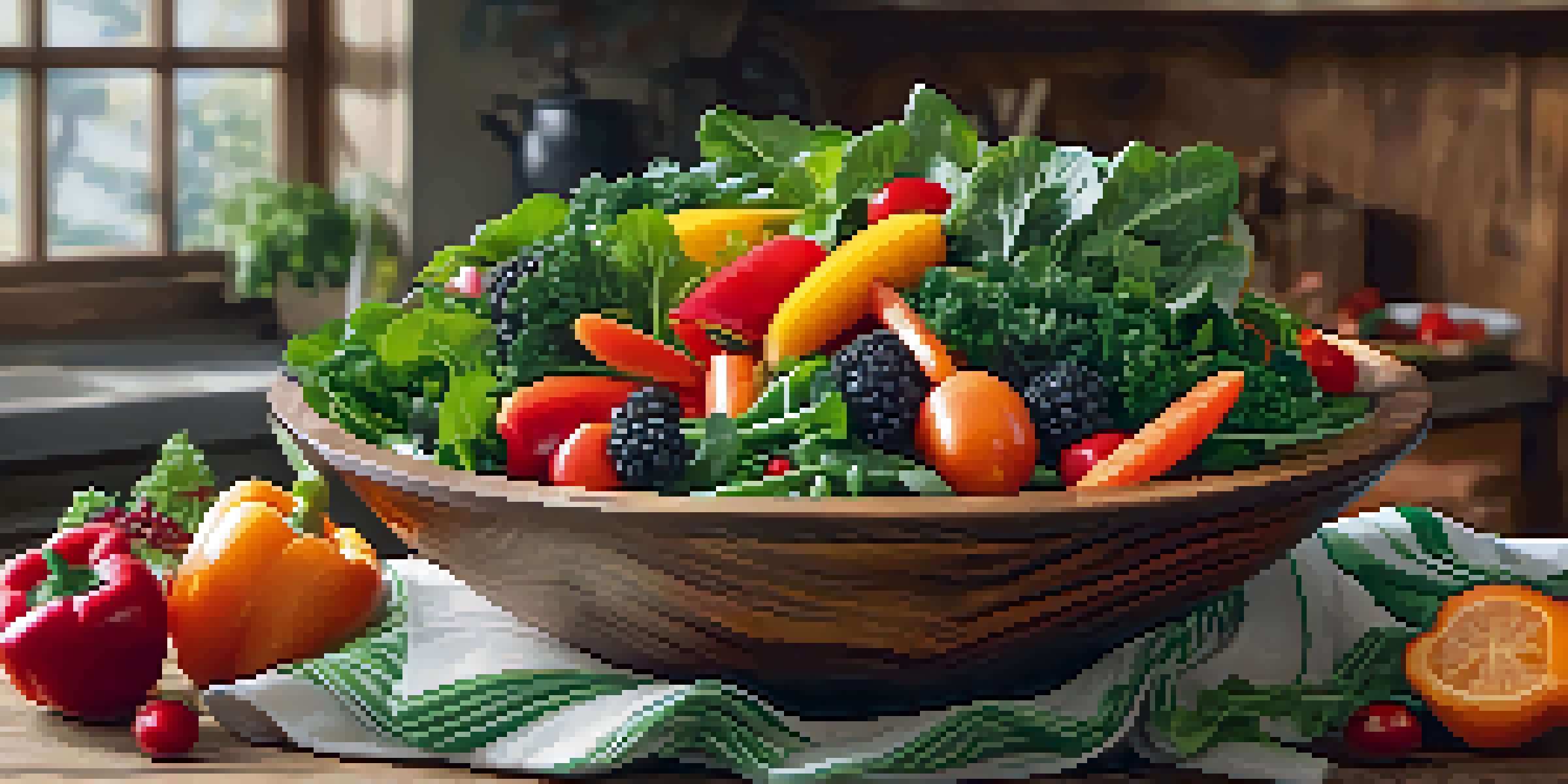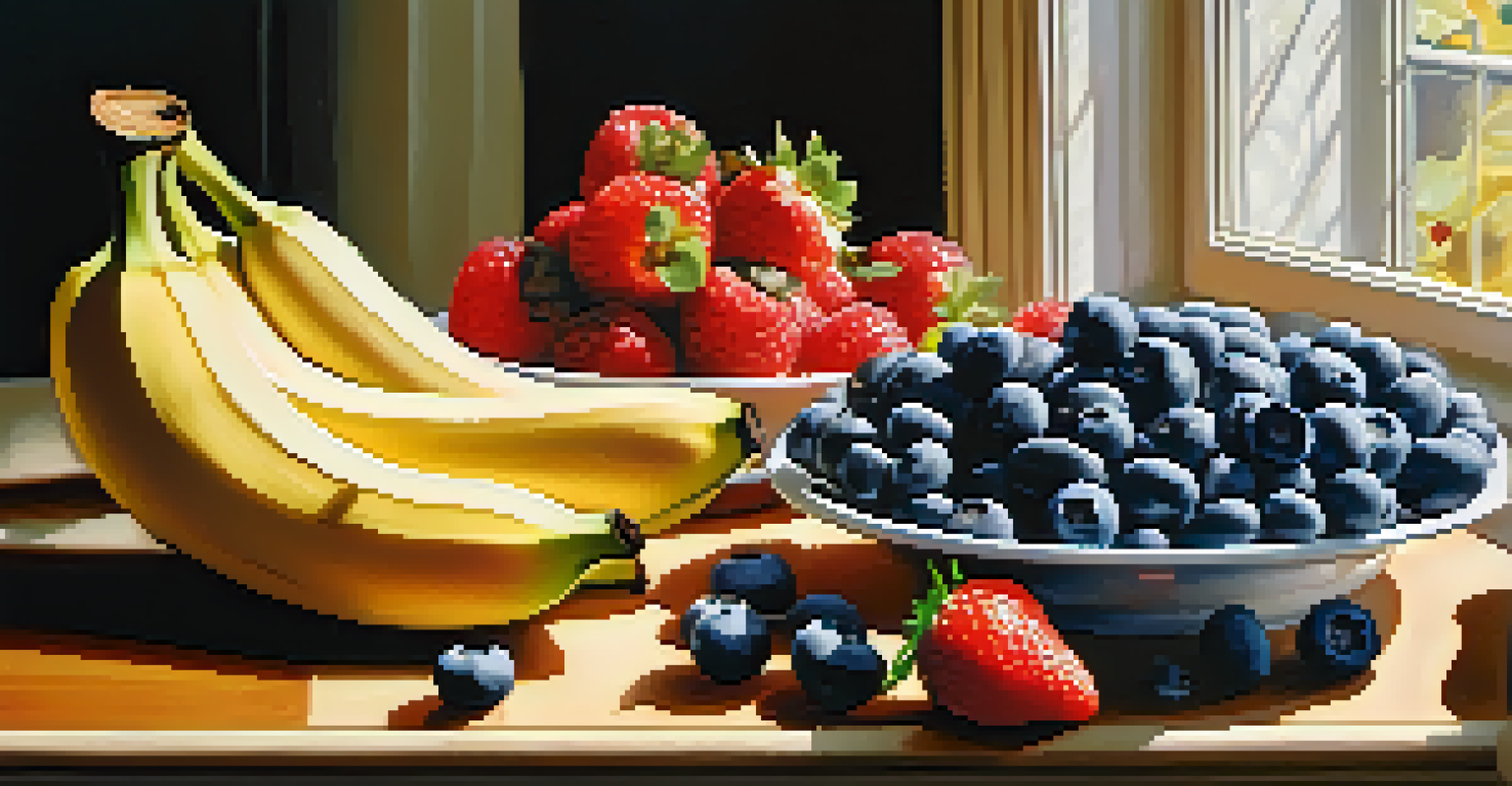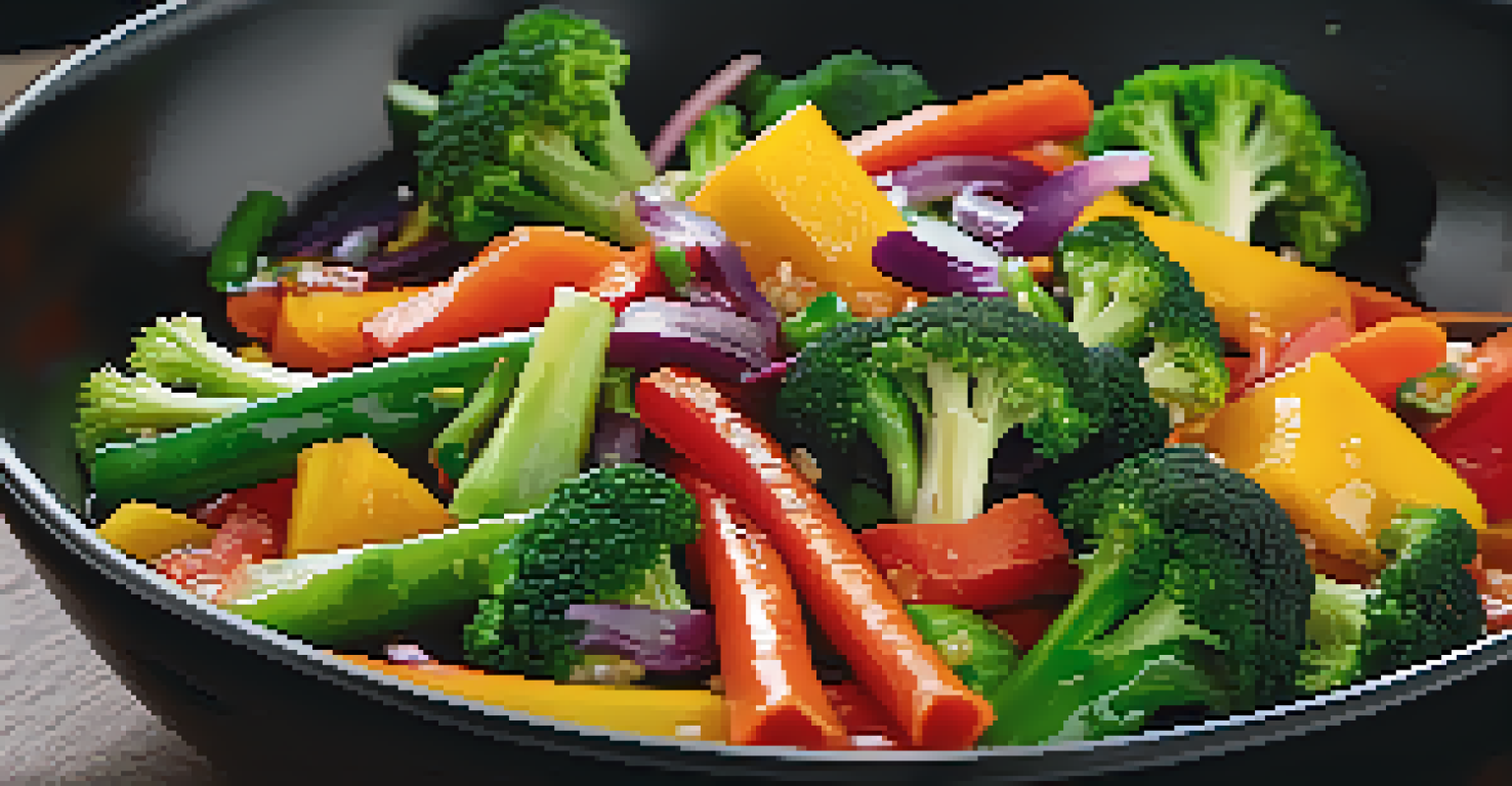Exploring Nutrient Density in Common Raw Fruits and Vegetables

Understanding Nutrient Density: A Quick Overview
Nutrient density refers to the amount of essential nutrients a food contains relative to its calorie content. In simpler terms, it’s about getting more bang for your calorie buck! Foods high in nutrient density are packed with vitamins, minerals, and antioxidants while being lower in calories.
Let food be thy medicine and medicine be thy food.
For example, a cup of spinach is incredibly nutrient-dense, providing a wealth of vitamins A, C, and K, along with iron and magnesium, all for just a few calories. On the other hand, some snacks may be high in calories but lack these vital nutrients, leaving you hungry for more.
Understanding nutrient density can help you make healthier choices, ensuring that your meals are not only satisfying but also nourishing. It encourages us to focus on foods that support our overall health rather than just those that fill our stomachs.
The Power of Leafy Greens in Nutrient Density
Leafy greens, like kale and Swiss chard, are often hailed as superfoods due to their impressive nutrient profiles. These greens are low in calories but rich in vitamins A, C, and K, making them fantastic additions to any diet. Just think of them as nature's multivitamins!

In addition to vitamins, leafy greens also contain fiber, which aids digestion and keeps you feeling full longer. Pairing these greens in a salad or smoothie not only enhances the flavor but also boosts your intake of essential nutrients without piling on the calories.
Nutrient Density Explained Simply
Nutrient density measures the essential nutrients in food relative to its calorie content, helping you make healthier choices.
Incorporating a variety of leafy greens into your meals can easily elevate your nutrient intake. Whether sautéed, blended, or tossed in a salad, they are versatile and delicious options for anyone looking to eat healthier.
Colorful Veggies: A Rainbow of Nutrients
Eating a variety of colorful vegetables is not just visually appealing; it’s also a great way to ensure you're getting a broad spectrum of nutrients. Each color typically represents different vitamins and antioxidants, contributing to overall health. For example, orange carrots are rich in beta-carotene, while red bell peppers are packed with vitamin C.
You are what you eat.
Incorporating a rainbow of vegetables into your meals can also help prevent boredom in your diet. Think about it: a vibrant stir-fry or a colorful salad can make a meal much more exciting and enjoyable, encouraging you to eat more nutrient-rich foods.
Moreover, the different textures and flavors of various vegetables can enhance your culinary experience. So, the next time you prepare a meal, consider reaching for a mix of colors to boost both your nutrient intake and your plate’s aesthetic.
Fruits: Nature's Sweet Nutrient Powerhouses
Fruits are often seen as a healthy snack option, but their nutrient density can vary widely. For instance, berries like blueberries and strawberries are not only delicious but also packed with antioxidants and vitamins. They have a high nutrient density, making them a smart choice for a sweet treat.
On the other hand, fruits like bananas, while nutritious, are higher in calories and lower in certain vitamins compared to berries. This doesn’t mean you should avoid them; rather, it highlights the importance of variety in your fruit choices.
Leafy Greens: Nutrient Powerhouses
Leafy greens like kale and spinach are low in calories yet high in essential vitamins and minerals, making them great for your diet.
Including a range of fruits in your diet can provide numerous health benefits, from improved digestion to enhanced heart health. So, don’t hesitate to mix it up with different fruits to maximize your nutrient intake!
The Role of Nutrient Density in Weight Management
Nutrient density plays a significant role in weight management, as consuming foods rich in nutrients can help control appetite and reduce cravings. Foods that are high in nutrients but low in calories, like vegetables and certain fruits, allow you to eat larger portions without overeating. This can be a game-changer for those looking to shed a few pounds.
For example, filling your plate with leafy greens, colorful veggies, and fruits can leave you feeling satisfied while still maintaining a calorie deficit. This way, you’re nourishing your body while also working towards your weight goals.
Additionally, nutrient-dense foods often require more chewing and take longer to eat, which can enhance feelings of fullness. Focusing on nutrient density rather than just calorie counting can lead to healthier and more sustainable weight management strategies.
How to Incorporate More Nutrient-Dense Foods
Incorporating more nutrient-dense foods into your diet doesn’t have to be daunting. Start by gradually adding leafy greens into your smoothies or salads. You can even sneak them into sauces or soups without compromising taste!
Next, explore the vegetable aisle for colorful options that catch your eye. Experimenting with different cooking methods, such as roasting or steaming, can enhance the flavors and make veggies more appealing. Remember, the more enjoyable your meals are, the more likely you are to stick with them.
Variety Enhances Nutrient Intake
Incorporating a colorful array of fruits and vegetables not only adds visual appeal to meals but also ensures a broader spectrum of nutrients.
Lastly, don’t shy away from experimenting with fruits. Try new recipes, like fruit salads or smoothies, to discover new favorites. Making small changes can lead to significant improvements in your overall nutrient intake.
Final Thoughts on Nutrient Density
Understanding and prioritizing nutrient density can transform your eating habits for the better. By focusing on foods that offer high nutritional value without excessive calories, you can support your overall health and well-being. It’s about making informed choices that benefit both your body and your taste buds.
As you explore the world of fruits and vegetables, remember that variety is key. Each food has its unique nutritional profile, so mix things up to ensure a balanced intake of essential nutrients. This not only enhances your meals but also keeps your diet exciting.

Ultimately, the journey to better nutrition is a personal one, and it’s about finding what works best for you. With a little exploration and creativity, you can make nutrient-dense foods a delicious part of your everyday life.